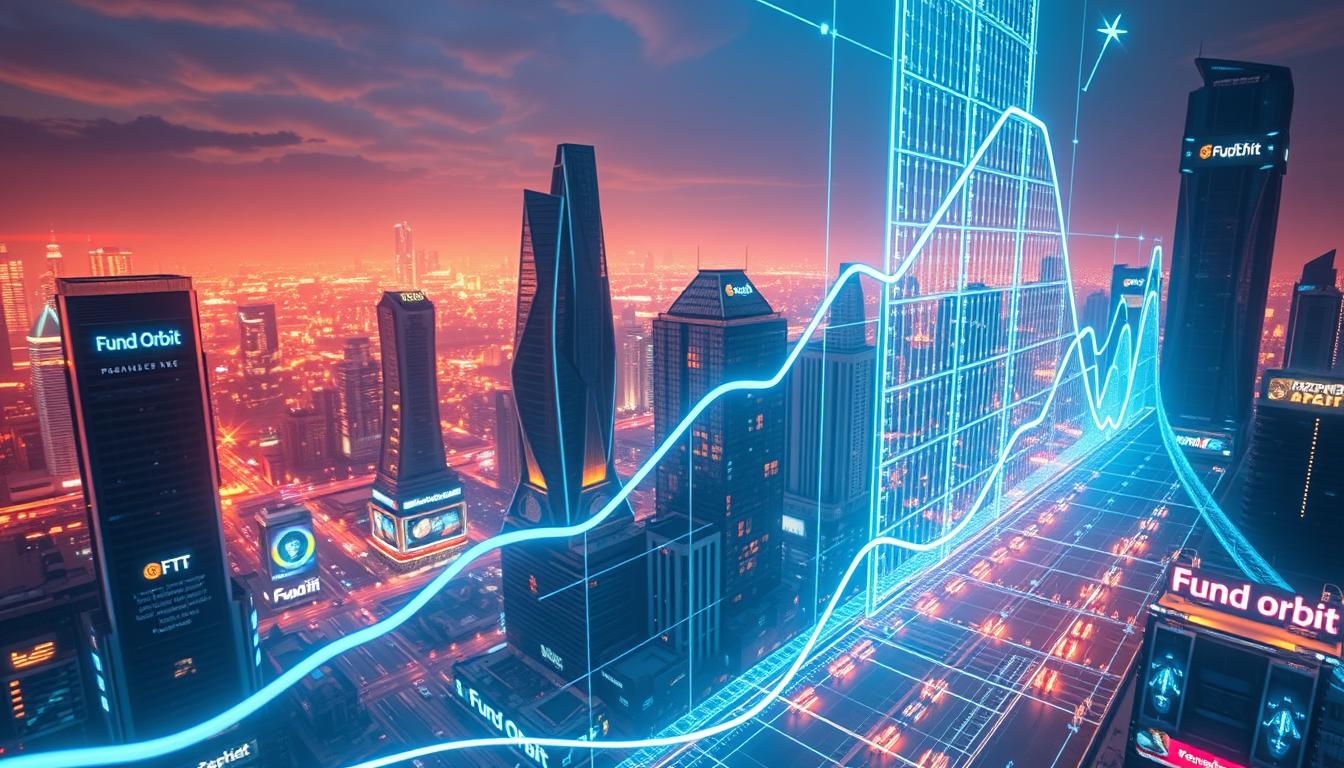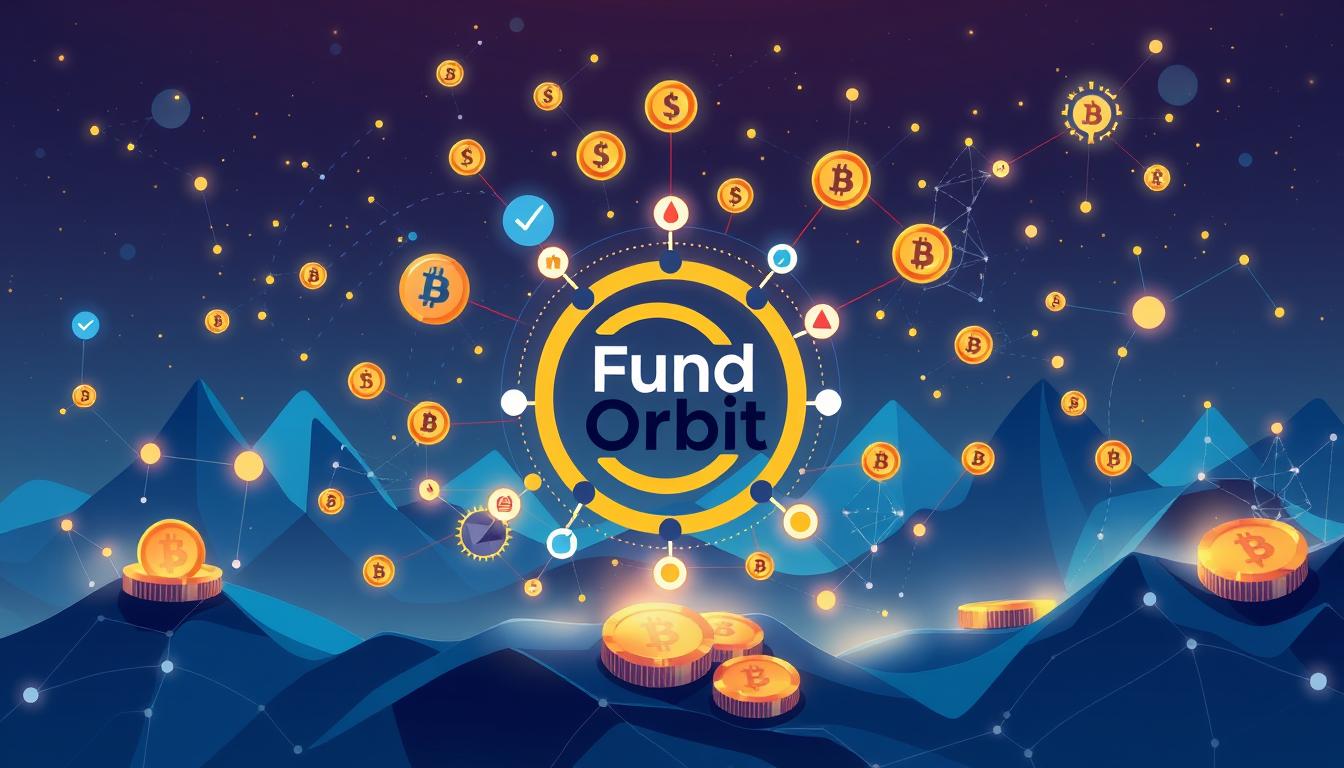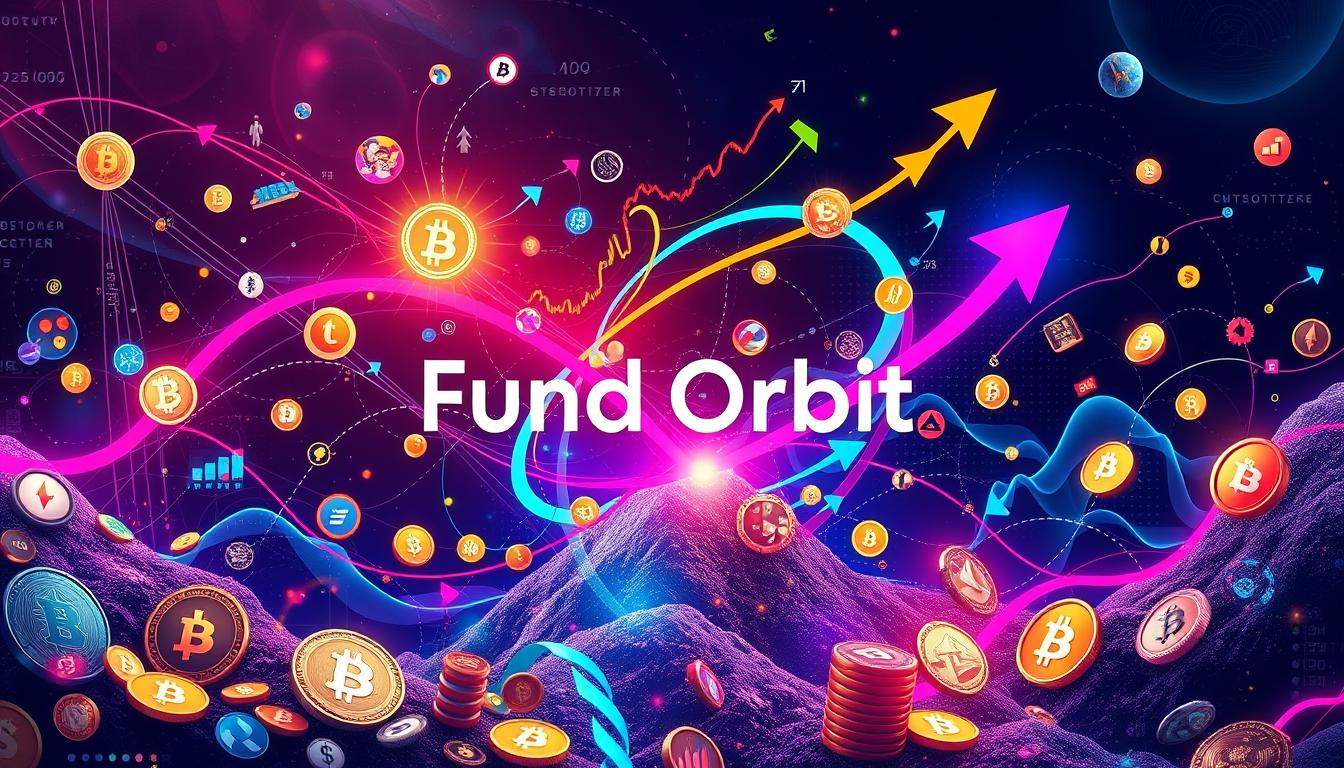The global non-fungible token market has witnessed a remarkable surge, reaching an estimated USD 26.9 billion in 2023. We are witnessing an unprecedented explosion in digital ownership, driven by the unique capabilities of blockchain technology. This growth is expected to continue, with a projected compound annual growth rate (CAGR) of 34.5% from 2024 to 2030.
As we explore this rapidly evolving market, it becomes clear that NFTs are transforming how we perceive digital value and ownership. At CoWrit Technologies Inc, we’re committed to providing insights into this burgeoning industry and the opportunities it presents.
Key Takeaways
- The global NFT market size was estimated at USD 26.9 billion in 2023.
- A CAGR of 34.5% is projected from 2024 to 2030.
- Blockchain technology underpins the unique value proposition of NFTs.
- The industry’s expansion is driven by various factors, including celebrity adoptions and institutional investments.
- NFTs are reshaping digital ownership and value perceptions.
The Current State of the NFT Market
As we delve into the current state of the NFT market, it’s clear that it’s on a robust growth trajectory. The non-fungible token market has been expanding rapidly, driven by increasing adoption and innovative applications.
Market Size and Valuation
The global NFT market size was estimated at USD 26.9 billion in 2023 and is expected to reach USD 35.7 billion in 2024. This growth is indicative of the market’s revenue potential and its increasing value in the digital asset landscape. Projections suggest that the market will continue to grow at a compound annual growth rate of 34.5% from 2024 to 2030, reaching USD 211.7 billion by 2030.
Key Growth Indicators
Several key growth indicators signal the continued expansion of the NFT market. These include:
- Increasing user adoption rates, with over 16% of adult Americans having purchased digital assets in 2022.
- Significant rebounds in trading volumes across NFT marketplaces, with monthly volumes more than tripling in early 2023 compared to late 2022 figures.
- Diversification of NFT applications beyond art into gaming, music, sports, and virtual real estate, creating multiple growth vectors.
- Strategic partnerships between traditional companies and blockchain platforms, accelerating mainstream adoption.
- Improvements in user experience and reduced transaction costs, lowering barriers to entry and contributing to a broader user base.
These trends collectively strengthen the overall market outlook, indicating a promising future for the NFT market.
Understanding the NFT Growth Trajectory
To grasp the full potential of NFTs, it’s necessary to examine their historical development and future growth prospects. The NFT market has evolved significantly over the years, driven by technological advancements and changing consumer behaviors.
Historical Development of NFTs
The concept of NFTs has been around since the early days of blockchain technology. However, it wasn’t until the launch of projects like CryptoKitties in 2017 that NFTs started gaining mainstream attention. The true potential of NFTs began to unfold with the advent of decentralized marketplaces and the integration of NFTs into various industries.
By 2021, the NFT market had experienced exponential growth, with sales figures skyrocketing to unprecedented levels. This period saw the emergence of new marketplaces and the involvement of high-profile artists and celebrities, further fueling the growth of NFTs.
Factors Driving Exponential Growth
Several factors have contributed to the rapid growth of the NFT market. Blockchain technology has played a crucial role by providing a secure and transparent way to create, buy, sell, and own NFTs. Additionally, the increasing adoption of cryptocurrencies and the growing interest in digital art have been significant drivers.
Our analysis indicates that the growth is also driven by the expanding use cases of NFTs beyond digital art, including gaming, music, and virtual real estate.
Growth Projections Through 2030
Our comprehensive growth projections indicate a strong upward trajectory for the NFT market, with a compound annual growth rate (CAGR) of 34.5% through 2030. We forecast the market to grow from USD 35.7 billion in 2024 to approximately USD 211.7 billion by 2030.
| Year | Market Size (USD Billion) | CAGR (%) |
|---|---|---|
| 2024 | 35.7 | – |
| 2030 | 211.7 | 34.5 |
Our projections suggest that the growth will be driven by practical applications and utility, creating a more sustainable long-term growth pattern. Regional growth is expected to be uneven, with Asia Pacific outpacing other regions in terms of percentage growth.
Digital vs. Physical Assets in the NFT Space
The NFT landscape is characterized by a fascinating interplay between digital and physical assets, each with its unique growth prospects. As we delve into the nuances of this dichotomy, it becomes clear that both categories are poised for significant growth, albeit through different pathways.

Digital Assets: Leading the Charge
Digital assets have been at the forefront of the NFT revolution, accounting for the highest revenue share of 72.6% in 2023. This dominance is largely due to the increasing use of NFTs for securing ownership of digital art, music, video games, and trade cards. Artists worldwide are leveraging NFTs to assert their rights and monetize their digital creations more effectively.
The segment’s growth is further fueled by the expanding ecosystem of digital platforms that support the creation, sale, and trading of NFTs. As a result, digital assets continue to be the primary driver of the NFT market, with their share expected to remain significant in the foreseeable future.
Physical Assets: The Emerging Frontier
While digital assets lead the current market, physical assets are emerging as a rapidly growing frontier in the NFT space. We’re observing a trend where real-world items such as artwork, collectibles, and luxury goods are being represented by NFTs that verify their authenticity and ownership. This tokenization of physical assets is opening new avenues for businesses and consumers to benefit from blockchain verification.
Our analysis indicates that real estate tokenization is a particularly promising application, enabling fractional ownership of properties and streamlining complex transaction processes. As the infrastructure for bridging the digital and physical worlds matures, we predict accelerated growth in physical asset NFTs, potentially rivaling purely digital assets in market share by the end of the decade.
Major Applications Fueling NFT Adoption
NFT adoption is being fueled by a diverse range of innovative use cases. As the technology continues to mature, we’re seeing a proliferation of applications across various industries, each contributing to the growing demand for NFTs.
Collectibles and Art
The collectibles segment accounted for the largest revenue share in 2023, with collectibles being tokens that can be minted in NFT marketplaces. The ownership of these collectibles is encrypted, ensuring secure and transparent transactions. The art world has also embraced NFTs, with digital art becoming a significant application. Artists are leveraging NFTs to create unique, verifiable, and tradable digital assets, opening new revenue streams and changing how we perceive ownership in the art world.
For more insights on top NFT projects, visit this article on crafting a vision for success by exploring top NFT projects.
Gaming and Metaverse Integration
Gaming is another significant area where NFTs are making a substantial impact. The integration of NFTs into gaming ecosystems allows for the creation of unique in-game assets that players can own, trade, and monetize. This is further enhanced by the concept of the metaverse, where NFTs can represent a wide range of digital assets, from virtual real estate to unique digital collectibles.
Utilities and Sports Applications
Utility-focused NFTs are gaining traction, with tokens providing access to exclusive communities, events, or services. We’ve observed that sports applications represent a particularly successful category, with platforms like NBA Top Shot pioneering the concept of memorable sports moments as collectible digital assets. Our research shows that sports organizations are leveraging NFTs to enhance fan engagement, creating new revenue streams through digital collectibles, ticketing, and exclusive experiences. Additionally, music NFTs are emerging as a powerful application, with artists using tokens to provide fans with exclusive content and unique experiences. For insights on tracking performance in related marketing strategies, check out this guide on tracking and analyzing affiliate marketing performance.
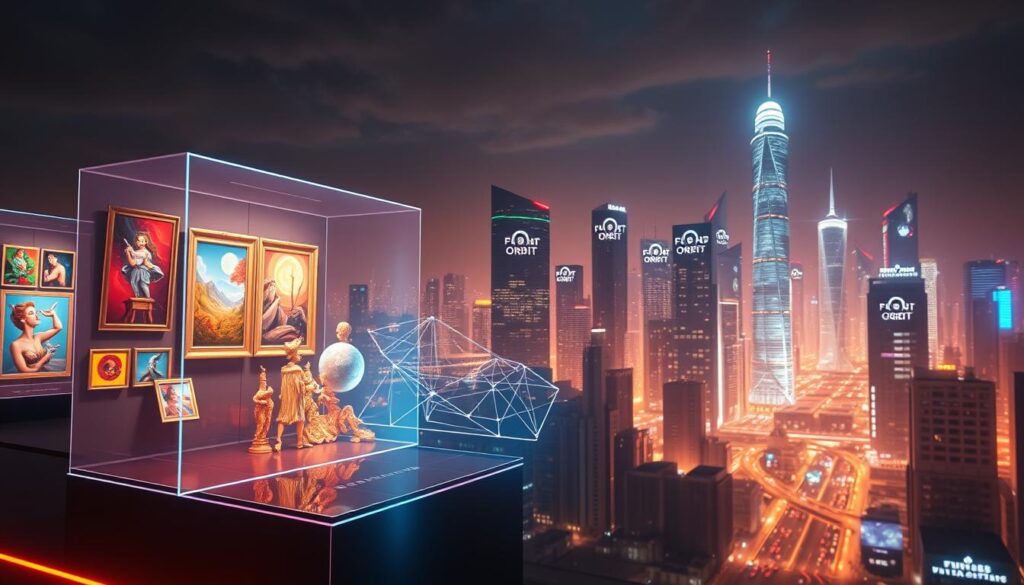
Regional Market Analysis and Opportunities
The global NFT market is witnessing varied regional growth trajectories, driven by different factors. As we analyze the market, it becomes clear that different regions are contributing uniquely to the overall growth and adoption of NFTs.
North America: Market Leader
North America accounted for the largest revenue share of 31.6% in 2023, driven by increasing product adoption among millennials. The rise in the number of artists creating digital artwork in countries like the U.S. and Canada is expected to further drive market growth in this region. Our analysis indicates that the strong presence of key market players and a well-established digital art ecosystem are key factors contributing to North America’s leadership in the NFT market.
Asia Pacific: Fastest Growing Region
The Asia Pacific region is emerging as the fastest-growing market for NFTs, driven by the increasing adoption of cryptocurrencies and a growing interest in digital art. Countries such as China, Japan, and South Korea are at the forefront of this growth, with their tech-savvy populations and government initiatives supporting the development of NFT ecosystems.
Europe and Other Emerging Markets
Europe has established itself as a significant player in the NFT space, with countries like the UK, Germany, and France developing vibrant NFT ecosystems. Our report highlights that European markets have shown particular interest in NFTs related to traditional cultural institutions. Additionally, emerging markets in Latin America, the Middle East, and Africa present substantial growth potential, driven by increasing cryptocurrency adoption and government support for NFT initiatives.
| Region | 2023 Market Share | Growth Drivers |
|---|---|---|
| North America | 31.6% | Millennial adoption, digital art growth |
| Asia Pacific | Growing rapidly | Cryptocurrency adoption, government initiatives |
| Europe | Significant presence | Cultural institutions, tech sectors |
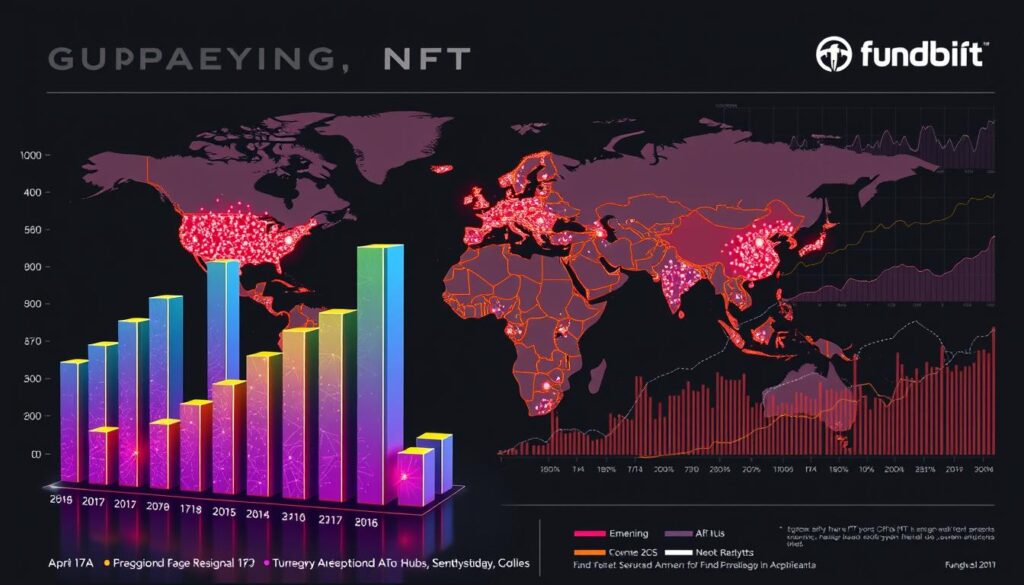
Key Players Shaping the NFT Landscape
The NFT space is being transformed by a mix of established leaders and emerging innovators. As the non-fungible token market continues to evolve, various players are driving its growth and adoption.
Established Market Leaders
Several prominent companies are currently leading the charge in the NFT market. OpenSea (Ozone Networks, Inc.), for instance, offers a comprehensive marketplace for NFTs based on the Ethereum ERC-721 token standard and Polygon. Other notable players include CryptoPunks – Larva Labs Studio, Funko Inc., Dapper Labs, Inc., and Nifty Gateway (Gemini Trust Company, LLC). These platforms have established themselves as key facilitators of NFT transactions, contributing significantly to the industry‘s revenue.
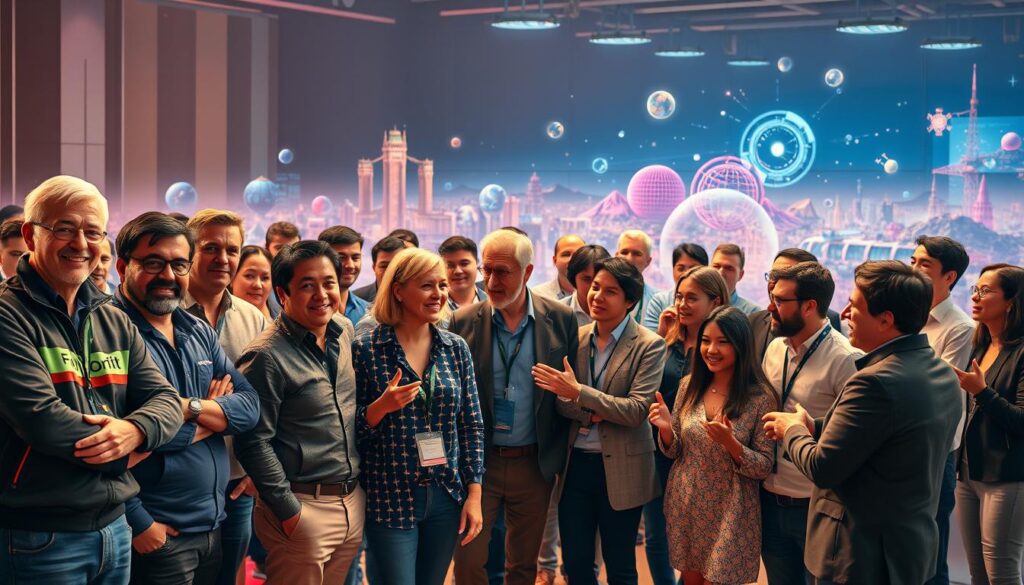
Emerging Innovators and Disruptors
Alongside established leaders, emerging innovators are also making their mark on the NFT landscape. These new entrants are bringing fresh strategies and technologies to the table, further diversifying the market. Their innovative approaches are expected to drive continued growth and expansion in the NFT industry.
Strategic Partnerships and Acquisitions
Partnerships and acquisitions are becoming increasingly important in the NFT ecosystem. Our research reveals that collaborations between blockchain companies and traditional brands are creating powerful synergies. For example, Dapper Labs’ partnership with Disney has been particularly noteworthy, leveraging Disney’s iconic IP and Dapper’s blockchain expertise. Additionally, security-focused partnerships, such as Sandbox’s alliance with Ledger Enterprise, are addressing growing security concerns as the value of NFT collections increases.
As the NFT market continues to mature, we can expect to see more cross-industry partnerships driving innovation and mainstream adoption. The consolidation of the fragmented NFT technology landscape through strategic acquisitions is also likely to play a significant role in shaping the future of the industry.
Challenges and Regulatory Considerations
The NFT ecosystem is not without its challenges, including market volatility and regulatory uncertainty. As NFTs continue to gain traction, addressing these challenges is crucial for the long-term sustainability of the market.
Market Volatility and Uncertainty
The NFT market is characterized by its volatility, with token prices fluctuating significantly. This volatility can be attributed to various factors, including market speculation, the novelty of the technology, and the lack of fundamental valuation methods. Investors must be cautious and well-informed to navigate this unpredictable landscape.
Regulatory Framework Development
The development of a regulatory framework for NFTs is an ongoing process. Regulators are grappling with how to classify NFTs, whether as securities, commodities, or something entirely new. A clear regulatory framework is essential for providing market participants with the certainty they need to invest and innovate. Our analysis suggests that a balanced approach, which protects consumers without stifling innovation, is likely to emerge.
Security and Fraud Concerns
Security and fraud are significant concerns in the NFT space. We’ve identified several key issues, including:
- Security vulnerabilities in smart contracts and marketplaces, leading to high-profile thefts of valuable tokens.
- Fraudulent activities, such as the creation and sale of counterfeit NFTs, damaging creator confidence and market integrity.
- The permanence of blockchain technology, making it challenging to rectify security breaches once they occur.
- Emerging privacy concerns due to the public nature of blockchain transactions.
Addressing these challenges through improved platform security, user education, and technological innovation is crucial for building trust in NFT ownership. 
Conclusion: The Future Outlook for NFTs
Our analysis suggests that the NFT market will experience remarkable expansion in the coming years. The projected growth from $35.7 billion in 2024 to $211.7 billion by 2030 represents one of the most significant opportunities in the digital economy.
As the NFT market matures, we predict a shift beyond speculative applications toward utility-focused implementations that solve real-world problems and create tangible value across various industries. The integration of non-fungible tokens with emerging technologies like artificial intelligence, augmented reality, and the Internet of Things will unlock new use cases and value propositions.
We anticipate increasing specialization and the emergence of vertical-specific platforms catering to unique industry needs, from fine art to gaming and enterprise applications. Regulatory clarity will be crucial in determining the pace and direction of future growth, with thoughtful regulation potentially accelerating institutional adoption.
At CoWrit Technologies Inc, we’re committed to helping businesses navigate this exciting frontier through our comprehensive services, including AI Generative Applications and Digital Marketing strategies tailored to the NFT ecosystem. To discuss how our expertise can help you capitalize on the tremendous market potential of NFTs, reach out to us via WhatsApp at +44-7822010953.
